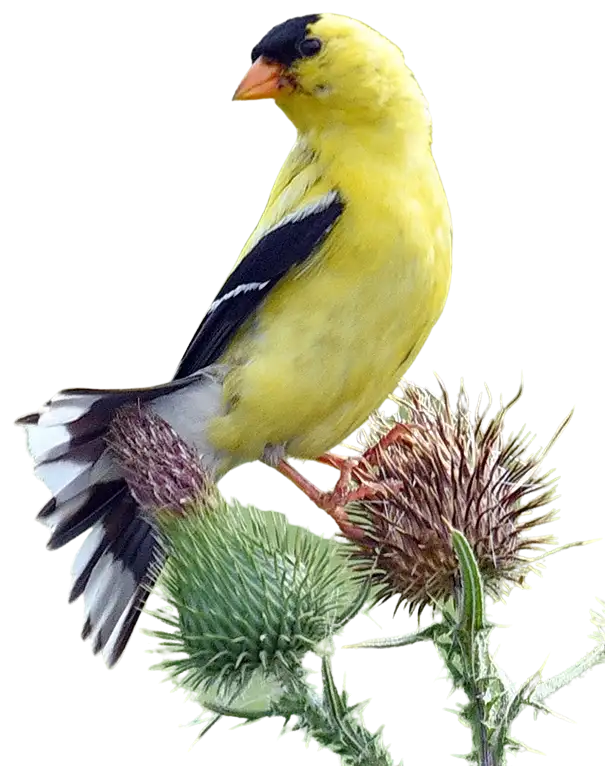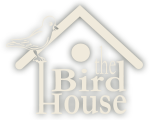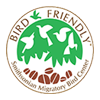Will it be a finch winter? A Snowy Owl winter? November usually provides the clues. The first wintry weather arrives, and with it the birds of the season. Ducks, swans, late shorebirds and other migrants continue to move through the area, as 153 species are seen on average.
If it is a finch winter, Red and White-winged Crossbill, Pine and Evening Grosbeak, Pine Siskin, and redpolls will begin to appear. Check cone-bearing conifers and the catkins of birch and alder – favorite food sources for winter finches. Look over wandering flocks of Cedar Waxwing for the occasional Bohemian Waxwing, which has a rusty undertail. Watch for late songbird migrants and lingering half-hardy species. Warblers, Blue-headed Vireo, thrushes, sapsuckers, Carolina Wren, and Fox Sparrow are all possible.
Durand Eastman Park and Hamlin Beach State Park often have good cone crops that attract finches; the campground area at Webster Park and the Owl Woods near Braddock Bay may also host these species. The orchard at Durand Eastman often draws waxwings.
In the fields, Northern Shrike will be more numerous now, along with Short-eared Owl and Rough-legged Hawk. Wintering kestrels will arrive to bolster the number of resident birds. Hawk-watching in general becomes much easier now with the foliage gone. Drive along the west lakeshore, and you will find raptors perched along treelines.
If it’s a Snowy Owl winter, they’ll be showing up in open fields, at the airport, along the lakeshore and on piers. In early morning, they may be perched on poles or rooftops, but as the sun rises they tend to move towards the ground. Watch for “a lump on a lump”, as they often hunker down on a piece of abandoned farm machinery or on a small hillock of raised dirt.
Flocks of Snow Bunting, with occasional Lapland Longspur mixed in, will join Horned Lark in the fields, and along roadsides. Parking lot #4 in Hamlin Beach State Park is a good place to find Snow Bunting. In addition, drive along North Hamlin, Chase, Moscow, Church and other roads near the west lakeshore in Parma and Hamlin.
On the lakeshore, this is the time to see migrating Purple Sandpiper. A few usually show up each November into December on piers and rock jetties, especially after east or north winds. November is also a prime time for gulls. Bonaparte’s Gull will continue to congregate and move along the lakeshore. The first Little Gull may arrive; Sabine’s, Franklin’s, and Black-legged Kittiwake are possible. So are tardy Common and Forster’s Tern.
Jaeger – both Pomarine and Parasitic – are likely during the first part of the month. Watch for birds harassing gulls, which is a jaeger trademark. Migrating Common and Red-throated Loon and Horned Grebe will still be visible from shore; Eared Grebe are rare but possible. Flocks of Bufflehead, Common Goldeneye, Black, White-winged, and Surf Scoter, and Common and Red-breasted Merganser will also be migrating or settling in for the winter. Keep an eye out for King Eider and Harlequin Duck, which are rarities here.
Look at jetties and piers at the Irondequoit Bay Outlet, Charlotte, the East Spit of Braddock Bay, and at Hamlin Beach State Park. The bluffs at Parking Lot #4 at Hamlin Beach provide an excellent observation point for passing jaegers, gulls, and waterfowl. The Niagara River becomes a key staging area for thousands of gulls, including rarities, and is definitely worth a visit.
On the ponds, ducks will still be moving through in good numbers. American Wigeon, Ring-necked Duck, Northern Shoveler, Green-winged Teal, Canvasback, Mallard and American Black Duck will be most numerous.
Watch also for Hooded Merganser, Northern Pintail, and Ruddy Duck. Dunlin, Pectoral Sandpiper, and White-rumped Sandpiper are the most likely shorebirds. Look in Irondequoit Bay, Braddock Bay, and any of the lakeshore ponds in Greece for ducks and waterfowl in general; mudflats at the south end of Irondequoit Bay (off the north side of Empire Boulevard), in the Salmon Creek area, at the east spit of Braddock Bay, and at Northrup Creek Sanctuary for shorebirds. Be sure to take a trip to Montezuma National Wildlife Refuge. Tundra Swan, Snow Goose, and a wide array of ducks and other waterfowl are sure to be seen.
In the yard, it’s time to stock the feeders once again for winter. Remember, the greater variety of feed, the greater variety of visitors. Black oil sunflower seed is the best all-purpose bird seed, but cracked corn, suet, peanuts and thistle seed will expand the number of species. Have a supply of water, which can be important as food when creeks and ponds freeze over. A heating element will keep the water from freezing. It is also helpful to have plenty of bushes and trees in your yard to provide shelter and cover. Be sure to leave your hummingbird feeders up, as vagrant species from the west coast, such as Rufous or Allen’s Hummingbird may show up.






